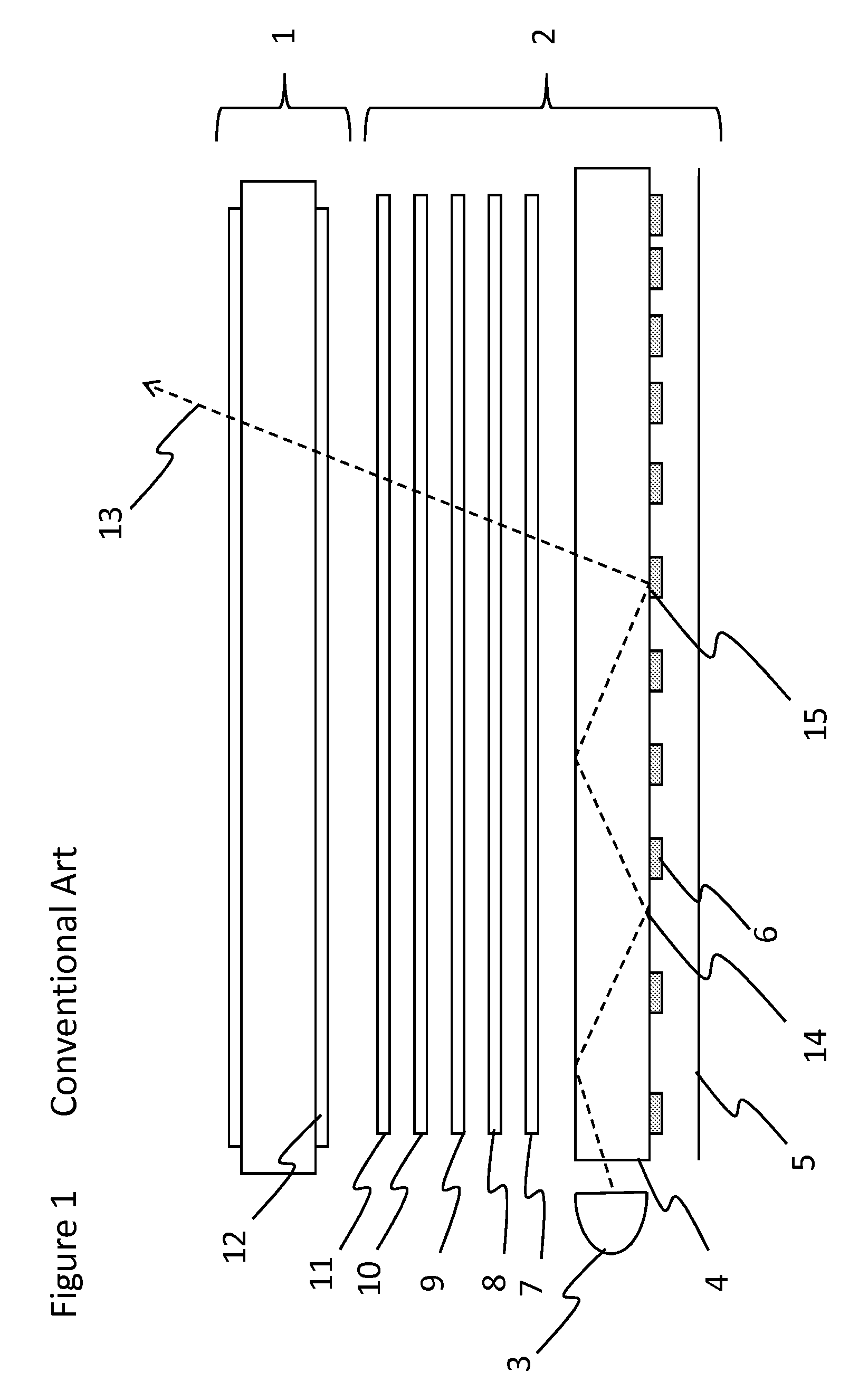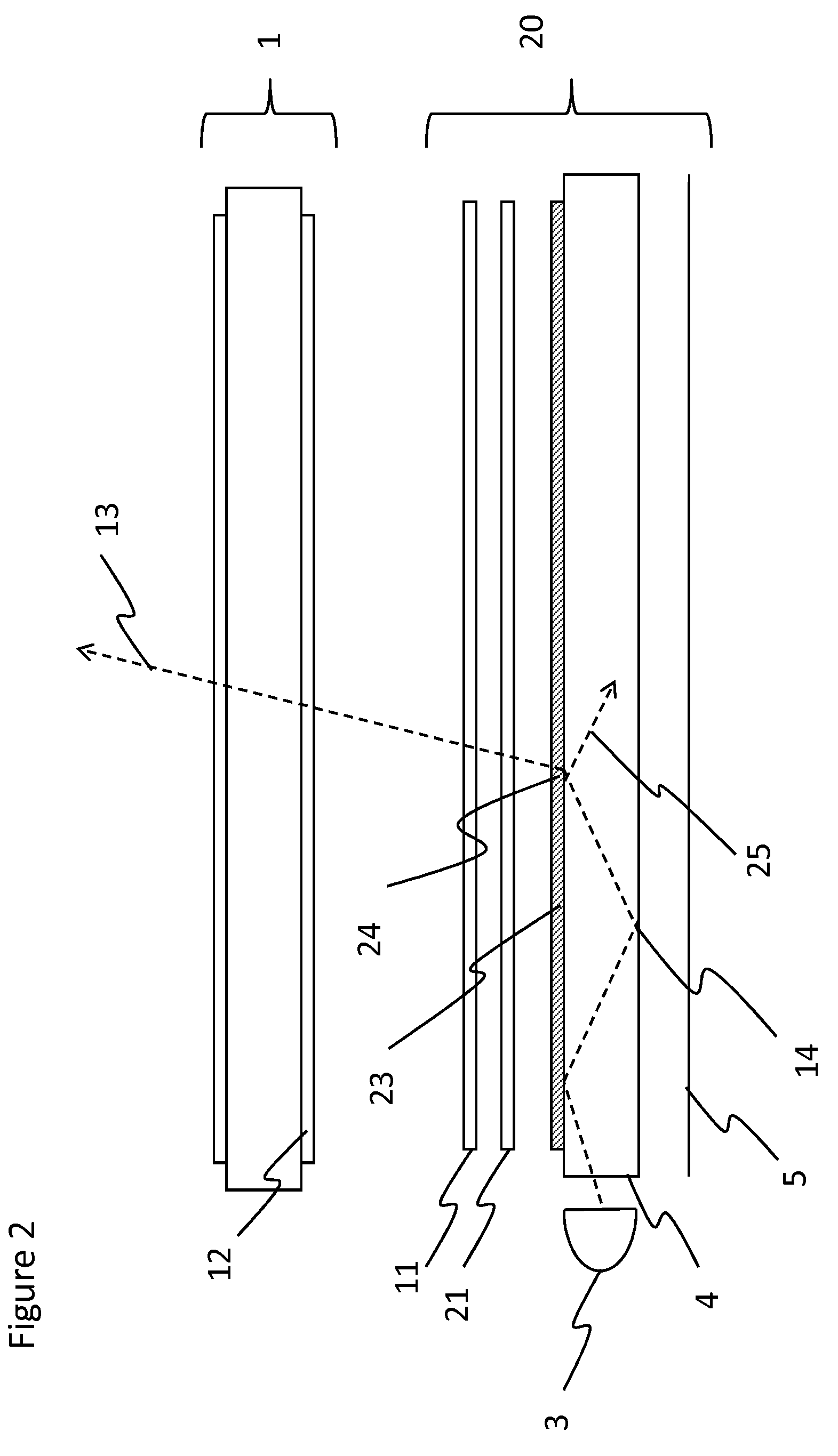Polarized diffractive backlight
a backlight and diffractive technology, applied in the field of backlights, can solve the problems of poor off-axis performance and absorption loss in the film, low polarization ratio te/tm, and low db
- Summary
- Abstract
- Description
- Claims
- Application Information
AI Technical Summary
Benefits of technology
Problems solved by technology
Method used
Image
Examples
first embodiment
[0061]An overview of the present invention is shown in FIG. 2.
[0062]The first embodiment of the present invention includes a backlight 20 that will be described in reference to the conventional backlight 2 of FIG. 1 and the relevant changes only will be described here.
[0063]As is shown in FIG. 2, the device in accordance with the invention includes a liquid crystal spatial light modulator (SLM) 1 and a backlight 20. The backlight includes a light source 3, a lightguide 4, and a reflector 5. Two sheets, a weak diffuser 21 and a polarization conversion film 11, are individually possible but not required in this arrangement. The lightguide 4 has sub-wavelength extraction features 23 that can be positioned on one or both major faces of the lightguide 4. In this example, the extraction features 23 are on the top surface.
[0064]Light 22 in the lightguide 4 is transmitted to the extraction features by TIR 14 and extracted at the surface 24 by the extraction features 23. The form of these ex...
second embodiment
[0072]the present invention is shown in FIG. 4. For sake of brevity, only the relevant differences between this embodiment and the embodiment of FIG. 2 are described herein.
[0073]In this aspect the lightguide 4 of the backlight 40 has a second layer 41, in which the refractive index of this layer 41 is less than that of the lightguide 4. The diffractive features 23 are placed on the second layer 41. In this arrangement the range of angles in the second layer 41 is much reduced. This means the quality of the out-coupled light is significantly improved over the single-lightguide approach.
[0074]Extraction of light at 42 from the main lightguide 4 into the secondary lightguide formed by the second layer 41 can be controlled by appropriate non-diffractive features on the opposite face of the lightguide 4, for example shallow wedge shaped features 48 that redirect at 47 a small proportion of the lightguide light 45 into the second layer 41.
[0075]The number of such additional layers is not...
PUM
 Login to View More
Login to View More Abstract
Description
Claims
Application Information
 Login to View More
Login to View More - R&D
- Intellectual Property
- Life Sciences
- Materials
- Tech Scout
- Unparalleled Data Quality
- Higher Quality Content
- 60% Fewer Hallucinations
Browse by: Latest US Patents, China's latest patents, Technical Efficacy Thesaurus, Application Domain, Technology Topic, Popular Technical Reports.
© 2025 PatSnap. All rights reserved.Legal|Privacy policy|Modern Slavery Act Transparency Statement|Sitemap|About US| Contact US: help@patsnap.com



